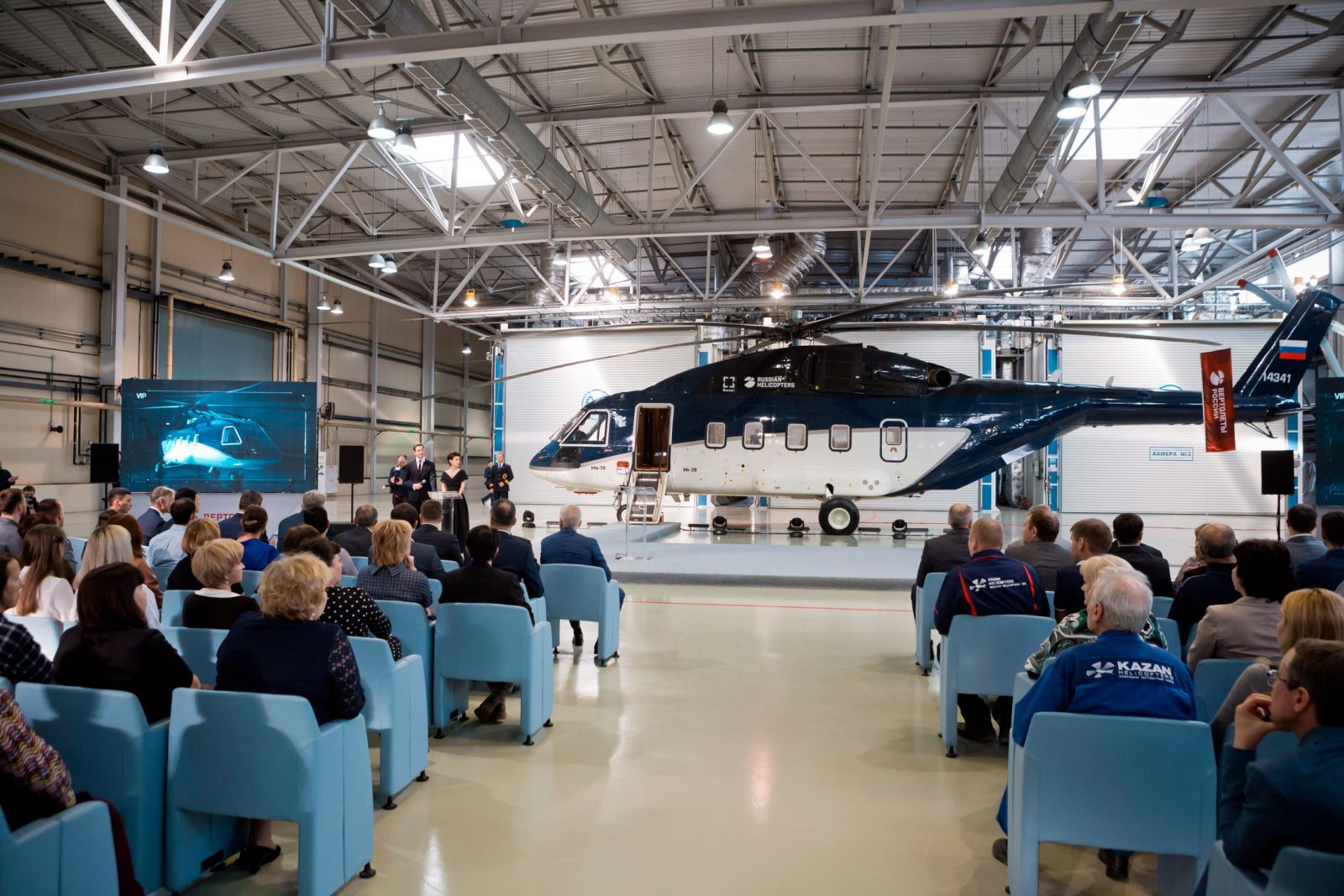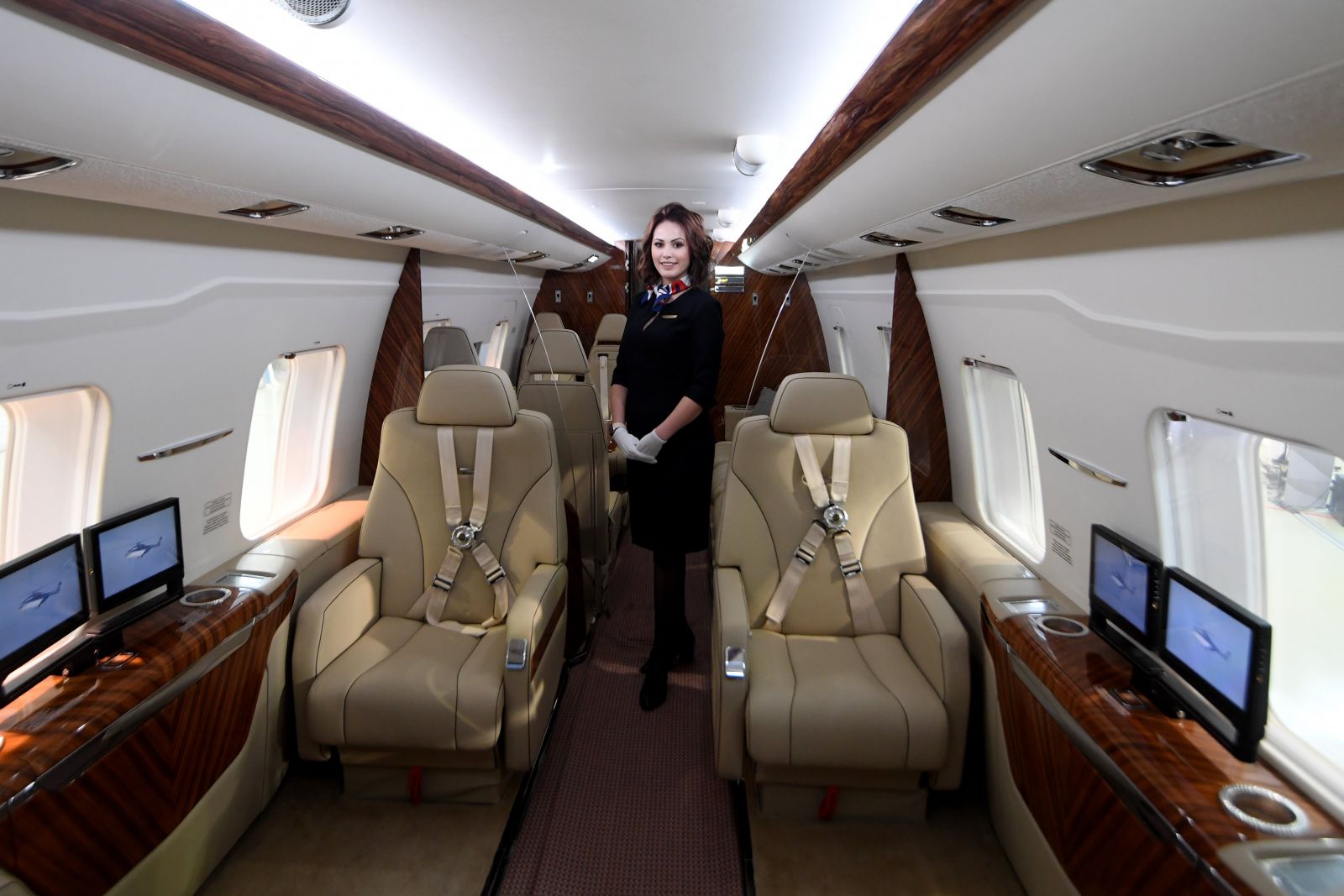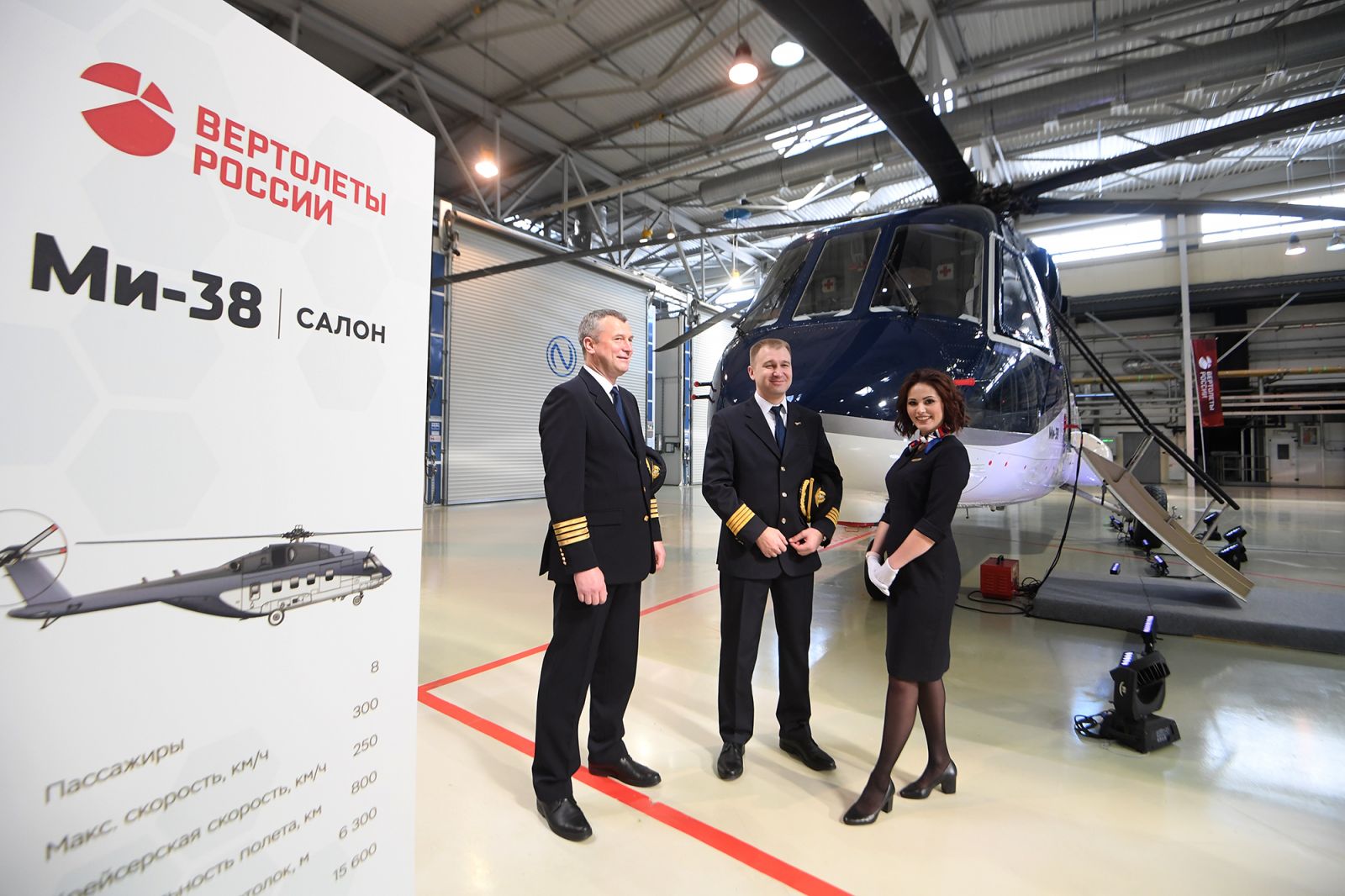
- The Mi-38 helicopter combines many innovative solutions that relate to almost all structural elements.
One such solution, for example, was new blades. In fact, in the Russian Federation, for the first time, a six-bladed rotor with a variable pitch was first implemented, and, as a result, completely new profile blades with excellent aerodynamic performance were developed.
The introduction of modern technology has significantly reduced the noise of the helicopter, which meets the best international standards. Modern navigation equipment of the helicopter allows you to fly in difficult weather conditions day and night. Such equipment is indispensable for rescue operations and fire fighting, where time plays a key role.
I would also like to note how spacious the cabin of the new helicopter is. The carrying capacity of the Mi-38 is 6,000 kg, and on an external sling the helicopter can take a load of 5,000 kg, which is a ton more than the capabilities of the Mi-8. Also, the helicopter is able to take on board up to 30 passengers against 24 at the Mi-8.
However, one should still understand that these helicopters are not competitors - they rather complement each other and expand the product line of Mi-brand helicopters known all over the world.
- How was your training for a new type? What did you come across for the first time, and what was already familiar? And how much does the preparation process for a new helicopter differ from the preparation for the machines of the previous generation?
- Thanks to the efforts of employees of the aviation training center of the Kazan Helicopter Plant and the flight test complex of the Moscow Helicopter Plant named after M.L. Mile training was held at a high level.

Despite this, the process of training pilots for this helicopter is really significantly different from what it was before, because even in its basic version the Mi-38 is equipped with a fully "glass cockpit" and analog equipment is not provided in principle.
In turn, digital helicopter systems allow you to quickly receive and analyse a large amount of information about the operation of aircraft systems, which increases the awareness of pilots and is much more convenient than piling up analog "alarms".
- It is known that the helicopter project received momentum in the last decade and suggested the installation of foreign engines. In the final version, the helicopter was equipped with domestic engines of the TV7-117 family. How correct was this choice and how does a car with a domestic engine show itself?
- I consider the layout of the helicopter with domestic engines to be the right decision. First of all, our engines are characterised by increased traction compared to foreign counterparts, which were considered at the development stage. Also, the use of a domestic motor made it possible to reduce the cost of maintenance of the helicopter, which is important for its after-sales service and is an important competitive advantage.
A significant plus is that the option with a domestic engine involves the installation of an auxiliary power unit, which is very important for passenger comfort, especially in domestic climatic conditions.

In addition, the production of a new engine is always new scientific and industrial competencies. The introduction of new technologies creates highly qualified jobs and raises the level of production culture. The scientific capitalisation of such projects gives a significant economic effect in related industries, and allows you to apply the accumulated experience and technologies for the implementation of other strategic projects.
In general, the engines are characterised by high reliability, and also allow you to operate the helicopter in severe weather conditions in the far north. The approval of the Federal Air Transport Agency allows the helicopter to be operated at temperatures up to minus 45 degrees.
- In your opinion, in comparison with foreign counterparts, what advantages of the Mi-38 could you mention?
- The Mi-38 helicopter will undoubtedly compete with the best developments of foreign companies, and it has a significant advantage in a number of indicators. In terms of capacity, the only actual competitor to the Mi-38 is the Airbus H225.
The capacity of a European helicopter is 5500 kg, which is slightly less than the capabilities of the Russian machine, with a carrying capacity of 6 tons. At the same time, the H225 cab has a usable volume of 15 cubic meters, which is almost 2 times less than the Mi-38 cab.
In terms of speed, the only competitor in its class is the AW101 helicopter manufactured and developed by AgustaWestland. That helicopter is equipped with three engines and has a cruising speed of 278 km/h, and the maximum is 290 km/h. In turn, the cruising speed of the twin-engine Mi-38 is 250 km/h, and the maximum is 320 km/h. The ferry range of all three helicopters is approximately comparable: for AW101 it is 1129 km, for H225 1135 km, and for Mi-38 it is 1200 km.

It is also important to note that the electronic equipment systems of modern domestic helicopters are largely unified and meet the most advanced requirements of customers. Unification can significantly simplify the maintenance of different types of helicopters and reduce the cost of production for large-scale production of such products.
- What do you feel about becoming the first commercial pilot of the Mi-38 in civil aviation?
- It is always nice to be the first civilian linear helicopter pilot who has yet to conquer the world market. And to conquer the sky in a domestic car is doubly pleasant!
I would like to express my gratitude to the teams of the Kazan Helicopter Plant, Moscow Helicopter Plant named after M.L. Mile and Helicopters of Russia holding for an excellent helicopter, which has excellent characteristics and once again emphasises the status of the company as a developer of world-class helicopters.











